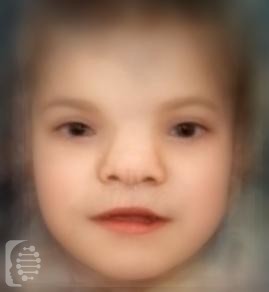What is Frontonasal Dysplasia?
Frontonasal Dysplasia is a rare genetic syndrome that affects the development of the head and face before birth.
There are 3 identified types of the syndrome.
Each type is caused by a mutation in a specific gene, and each syndrome has shared symptoms plus additional symptoms which make each form of the syndrome unique.
This syndrome is also known as:
Frontonasal Dysplasia; FND Frontonasal Malformation; FNM Frontorhiny Median cleft face syndrome; Median Facial Cleft Syndrome
What gene change causes Frontonasal Dysplasia?
Type 1 is caused by mutations in the ALX3 gene and is inherited in an autosomal recessive pattern.
Type 2 is caused by mutations in the ALX4 gene and is inherited in an autosomal dominant pattern.
In the case of autosomal dominant inheritance, just one parent is the carrier of the gene mutation, and they have a 50% chance of passing it onto each of their children. Syndromes inherited in an autosomal dominant inheritance are caused by just one copy of the gene mutation.
Type 3 is caused by mutations in the ALX1 gene and is inherited in an autosomal recessive pattern.
Autosomal recessive inheritance means an affected individual receives one copy of a mutated gene from each of their parents, giving them two copies of a mutated gene. Parents, who carry only one copy of the gene mutation will not generally show any symptoms, but have a 25% chance of passing the copies of the gene mutations onto each of their children.
What are the main symptoms of Frontonasal Dysplasia?
The main symptoms are the result of defects that occur as the head and face develops before birth. These include widely spaced eyes, a flat and broad nose, and a vertical groove down the middle of the face.
The syndrome may also affect the hair of an individual, and hair loss, thinly sparse hair is common along with a v-shaped or widow’s peak hairline. Nostrils of individuals are usually small.
Type 2 of the syndrome may include serious skull defects, as well as a condition known as agenesis of corpus callosum (when the two hemispheres of the brain fail to fuse together properly), and individuals may have varying levels of intellectual disability. Genial abnormalities are also common with this form of the syndrome.
Symptoms or features of type 3 may include missing eyes and low-set ears.
Possible clinical traits/features:
Widow’s peak, Pectoral muscle hypoplasia/aplasia, Preauricular skin tag, Postaxial hand polydactyly, Epicanthus, Cranium bifidum occultum, Brachydactyly, Coloboma, Conductive hearing impairment, Agenesis of corpus callosum, Cataract, Broad nasal tip, Bifid nasal tip, Wide nasal bridge, Anterior basal encephalocele, Lipoma of corpus callosum, Low-set ears, Intellectual disability, Median cleft lip, Median cleft palate, Microphthalmia, Joint contracture of the hand, Hypertelorism, Frontal cutaneous lipoma, Hypoplasia of the maxilla, Hypoplastic frontal sinuses, Tetralogy of Fallot, Widely-spaced maxillary central incisors, Radial deviation of finger, Camptodactyly, Clinodactyly, Ptosis, Short columella.
How is it diagnosed?
To find out if someone has a diagnosis of Frontonasal Dysplasia, it is important to have a consultation and evaluation with a clinical genetic specialist. Specialists may also suggest specific genetic testing or other types of tests to help reach a diagnosis. FDNA’s AI technology can help speed up the diagnostic process by analyzing facial features and other health information.

